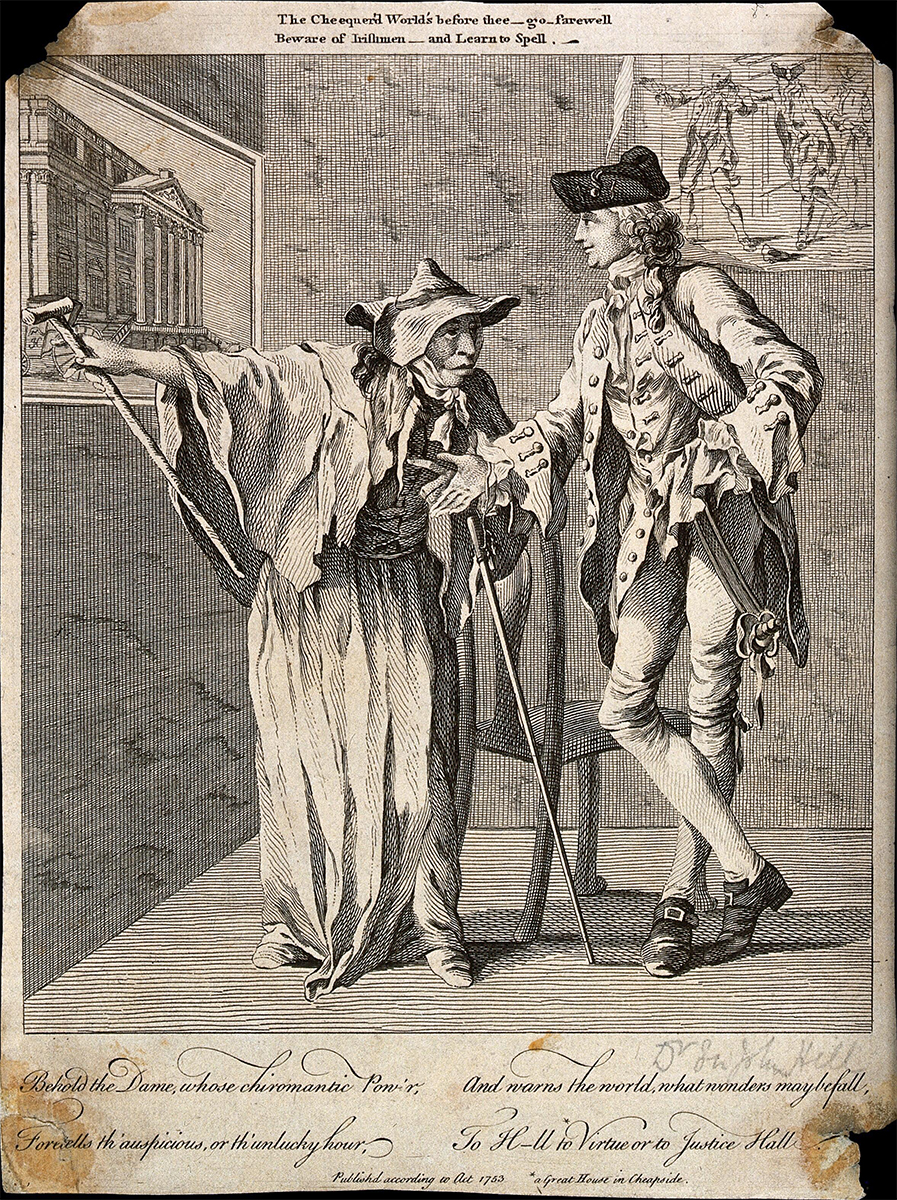
Mary Squires the fortune teller foretells the future to Sir John Hill: she indicates that she has support from the Lord Mayor of London
by an unknown artist
1753
Wellcome Library no. 563011i
Above the image:
The checquer's world's before thee: go farewell,
Beware of Irishmen, and learn to spell.
Below the image:
Behold the Dame, whose chiromantic Pow'r,
Foretells th' auspicious, or th' unlucky hour,
And warns the world, what wonder may befall,
To H—ll* to Virtue or to Justice Hall.*A great house in Cheapside
Note from the Wellcome catalogue:
Squires was famous as 'the old gypsy'. She was found guilty and sentenced to be hanged in 1753 for the alleged abduction of Elizabeth Canning and theft of her stays. Her notoriety is confirmed by her presence in prints of the day. Sir John Hill published a pamphlet in support of Squires against the testimony of Canning. On the left is a view of the Mansion House, the new residence of the Lord Mayor of London, at the junction of Cheapside and Poultry in the City of London: the building had been completed in 1752. In front of it is a carriage marked with the initials JC, but those are not the initials of a Lord Mayor of London 1752-1754. The Mansion House is the "Justice Hall" and the "great house in Cheapside" mentioned in the lettering: it used to contain a law court. The Lord Mayor Sir Crisp Gascoyne was the presiding judge in the trial of Mary Squires (which was held at Old Bailey, not at the Mansion House) and conducted a private enquiry to establish her innocence. Virtue Hall was one of the witnesses in the trial of Elizabeth Canning. Eventually Squires was acquitted; Canning was convicted of perjury and transported to Connecticut, where she died in 1773
Hill also claimed in the London advertiser that he had been assaulted by Mountfort Brown at Ranelagh on 6 May 1752, whereupon Brown challenged him to a duel. A print on the back wall shows the assault (British Museum, loc. cit., and ibid. no. 3183). This event was connected with the case of Elizabeth Canning through the involvement of Henry Fielding in both cases on the opposite side to Hill.
This image is provided courtesy of the Wellcome Library, which identifies it as a work in the public domain. You can use this work for any purpose without restriction under copyright law.